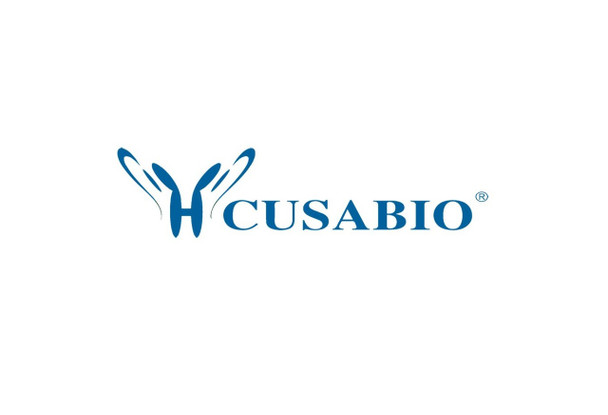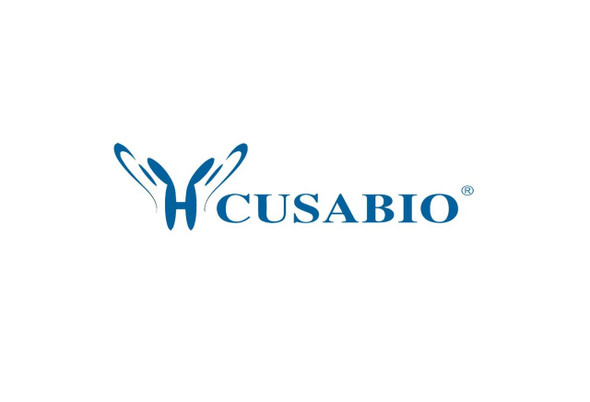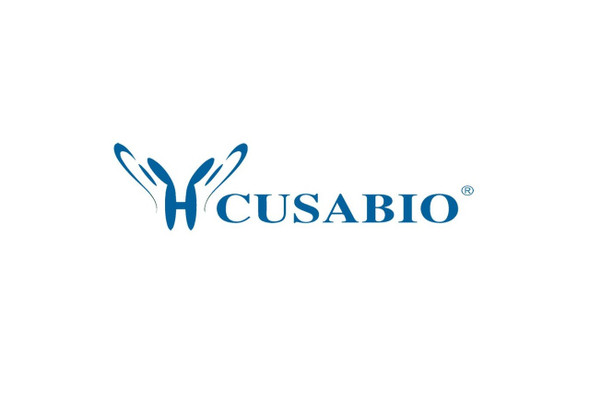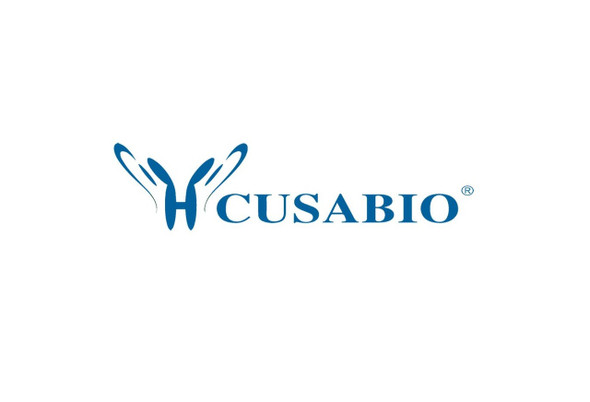Cusabio Human Recombinants
Recombinant Human KeRatin, type II cytoskeletal 4 (KRT4) | CSB-YP012556HU
- SKU:
- CSB-YP012556HU
- Availability:
- 25 - 35 Working Days
Description
Recombinant Human KeRatin, type II cytoskeletal 4 (KRT4) | CSB-YP012556HU | Cusabio
Alternative Name(s): Cytokeratin-4 ;CK-4Keratin-4 ;K4Type-II keratin Kb4
Gene Names: KRT4
Research Areas: Signal Transduction
Organism: Homo sapiens (Human)
AA Sequence: MIARQQCVRGGPRGFSCGSAIVGGGKRGAFSSVSMSGGAGRCSSGGFGSRSLYNLRGNKSISMSVAGSRQGACFGGAGGFGTGGFGAGGFGAGFGTGGFGGGFGGSFSGKGGPGFPVCPAGGIQEVTINQSLLTPLHVEIDPEIQKVRTEEREQIKLLNNKFASFIDKVQFLEQQNKVLETKWNLLQQQTTTTSSKNLEPLFETYLSVLRKQLDTLGNDKGRLQSELKTMQDSVEDFKTKYEEEINKRTAAENDFVVLKKDVDAAYLNKVELEAKVDSLNDEINFLKVLYDAELSQMQTHVSDTSVVLSMDNNRNLDLDSIIAEVRAQYEEIAQRSKAEAEALYQTKVQQLQISVDQHGDNLKNTKSEIAELNRMIQRLRAEIENIKKQCQTLQVSVADAEQRGENALKDAHSKRVELEAALQQAKEELARMLREYQELMSVKLALDIEIATYRKLLEGEEYRMSGECQSAVSISVVSGSTSTGGISGGLGSGSGFGLSSGFGSGSGSGFGFGGSVSGSSSSKIISTTTLNKRR
Source: Yeast
Tag Info: N-terminal 6xHis-tagged
Expression Region: 1-534aa
Sequence Info: Full Length
MW: 59.3 kDa
Purity: Greater than 90% as determined by SDS-PAGE.
Relevance:
Reference: A mutation detection strategy for oral mucosal keratins K4, K13, and K2p in white sponge nevus.Cassidy A.J., Morley S.M., McLean W.H.I.The finished DNA sequence of human chromosome 12.Scherer S.E., Muzny D.M., Buhay C.J., Chen R., Cree A., Ding Y., Dugan-Rocha S., Gill R., Gunaratne P., Harris R.A., Hawes A.C., Hernandez J., Hodgson A.V., Hume J., Jackson A., Khan Z.M., Kovar-Smith C., Lewis L.R. , Lozado R.J., Metzker M.L., Milosavljevic A., Miner G.R., Montgomery K.T., Morgan M.B., Nazareth L.V., Scott G., Sodergren E., Song X.-Z., Steffen D., Lovering R.C., Wheeler D.A., Worley K.C., Yuan Y., Zhang Z., Adams C.Q., Ansari-Lari M.A., Ayele M., Brown M.J., Chen G., Chen Z., Clerc-Blankenburg K.P., Davis C., Delgado O., Dinh H.H., Draper H., Gonzalez-Garay M.L., Havlak P., Jackson L.R., Jacob L.S., Kelly S.H., Li L., Li Z., Liu J., Liu W., Lu J., Maheshwari M., Nguyen B.-V., Okwuonu G.O., Pasternak S., Perez L.M., Plopper F.J.H., Santibanez J., Shen H., Tabor P.E., Verduzco D., Waldron L., Wang Q., Williams G.A., Zhang J., Zhou J., Allen C.C., Amin A.G., Anyalebechi V., Bailey M., Barbaria J.A., Bimage K.E., Bryant N.P., Burch P.E., Burkett C.E., Burrell K.L., Calderon E., Cardenas V., Carter K., Casias K., Cavazos I., Cavazos S.R., Ceasar H., Chacko J., Chan S.N., Chavez D., Christopoulos C., Chu J., Cockrell R., Cox C.D., Dang M., Dathorne S.R., David R., Davis C.M., Davy-Carroll L., Deshazo D.R., Donlin J.E., D'Souza L., Eaves K.A., Egan A., Emery-Cohen A.J., Escotto M., Flagg N., Forbes L.D., Gabisi A.M., Garza M., Hamilton C., Henderson N., Hernandez O., Hines S., Hogues M.E., Huang M., Idlebird D.G., Johnson R., Jolivet A., Jones S., Kagan R., King L.M., Leal B., Lebow H., Lee S., LeVan J.M., Lewis L.C., London P., Lorensuhewa L.M., Loulseged H., Lovett D.A., Lucier A., Lucier R.L., Ma J., Madu R.C., Mapua P., Martindale A.D., Martinez E., Massey E., Mawhiney S., Meador M.G., Mendez S., Mercado C., Mercado I.C., Merritt C.E., Miner Z.L., Minja E., Mitchell T., Mohabbat F., Mohabbat K., Montgomery B., Moore N., Morris S., Munidasa M., Ngo R.N., Nguyen N.B., Nickerson E., Nwaokelemeh O.O., Nwokenkwo S., Obregon M., Oguh M., Oragunye N., Oviedo R.J., Parish B.J., Parker D.N., Parrish J., Parks K.L., Paul H.A., Payton B.A., Perez A., Perrin W., Pickens A., Primus E.L., Pu L.-L., Puazo M., Quiles M.M., Quiroz J.B., Rabata D., Reeves K., Ruiz S.J., Shao H., Sisson I., Sonaike T., Sorelle R.P., Sutton A.E., Svatek A.F., Svetz L.A., Tamerisa K.S., Taylor T.R., Teague B., Thomas N., Thorn R.D., Trejos Z.Y., Trevino B.K., Ukegbu O.N., Urban J.B., Vasquez L.I., Vera V.A., Villasana D.M., Wang L., Ward-Moore S., Warren J.T., Wei X., White F., Williamson A.L., Wleczyk R., Wooden H.S., Wooden S.H., Yen J., Yoon L., Yoon V., Zorrilla S.E., Nelson D., Kucherlapati R., Weinstock G., Gibbs R.A.Nature 440:346-351(2006)
Storage: The shelf life is related to many factors, storage state, buffer ingredients, storage temperature and the stability of the protein itself. Generally, the shelf life of liquid form is 6 months at -20?/-80?. The shelf life of lyophilized form is 12 months at -20?/-80?.
Notes: Repeated freezing and thawing is not recommended. Store working aliquots at 4? for up to one week.
Function:
Involvement in disease: White sponge nevus 1 (WSN1)
Subcellular Location:
Protein Families: Intermediate filament family
Tissue Specificity: Detected in the suprabasal layer of the stratified epithelium of the esophagus, exocervix, vagina, mouth and lingual mucosa, and in cells and cell clusters in the mucosa and serous gland ducts of the esophageal submucosa (at protein level). Expressed widely in the exocervix and esophageal epithelium, with lowest levels detected in the basal cell layer.
Paythway:
Form: Liquid or Lyophilized powder
Buffer: If the delivery form is liquid, the default storage buffer is Tris/PBS-based buffer, 5%-50% glycerol. If the delivery form is lyophilized powder, the buffer before lyophilization is Tris/PBS-based buffer, 6% Trehalose, pH 8.0.
Reconstitution: We recommend that this vial be briefly centrifuged prior to opening to bring the contents to the bottom. Please reconstitute protein in deionized sterile water to a concentration of 0.1-1.0 mg/mL.We recommend to add 5-50% of glycerol (final concentration) and aliquot for long-term storage at -20?/-80?. Our default final concentration of glycerol is 50%. Customers could use it as reference.
Uniprot ID: P19013
HGNC Database Link: HGNC
UniGene Database Link: UniGene
KEGG Database Link: N/A
STRING Database Link: STRING
OMIM Database Link: OMIM









